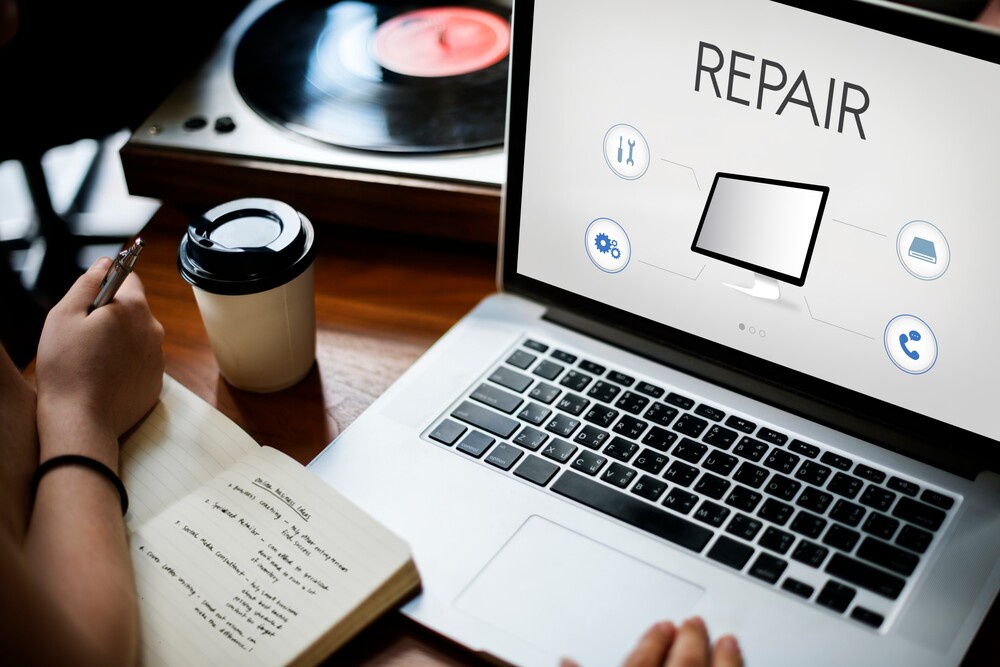Laptops are a highly valued commodity in today’s tech world. They provide us with convenience and portability, allowing us to take our work anywhere. But like any electronic device, laptops can be prone to certain faults. From hardware issues to software crashes and more, here are five common laptop faults and solutions. With this knowledge, you’ll have the information you need to keep your laptop running smoothly for years to come.
Broken Screen: A broken screen is one of the most common laptop faults. The good news is that it usually doesn't take long to fix.
There are two main types of screen damage: cracks and scratches. Cracks are usually caused by dropping your laptop, while scratches are usually the result of everyday wear and tear.
If you have a crack in your screen, the best thing to do is to take it to a professional for repair, search for a computer technician near me and you will get plenty of results. They will be able to replace the screen without damaging the rest of your laptop.
If you have a scratched screen, you can try to fix it yourself. There are many DIY tutorials online that show you how to do this. However, we recommend taking your laptop to a professional if the scratch is deep or if you are not confident in your ability to fix it yourself.
Faulty Keyboard: If you're having trouble with your laptop's keyboard, there are a few things you can try to fix the problem. Start by unplugging the keyboard and repluging it if it is properly connected. Alternatively, you can restart your computer if that does not work. If that doesn't work, you may have to replace the keyboard.
Overheating: Your laptop could be overheating for a number of reasons. The most common cause of laptop overheating is blocked ventilation. Dust and dirt can build up over time and prevent air from flowing properly through your laptop’s cooling system. This can lead to your laptop overheating, especially during intensive use.
To clean your laptop’s ventilation system, you can use a can of compressed air or a vacuum cleaner with a brush attachment. Be careful not to damage delicate parts of your laptop while cleaning it. Another potential cause of overheating is a faulty cooling fan. If your fan is not working properly, it won’t be able to adequately cool your laptop and it will overheat.
You can check if your fan is working properly by opening up your laptop and visually inspecting it. If you see any dust or dirt on the fan blades, you can clean it off with compressed air or a vacuum cleaner with the brush attachment. If the problem persists, you may need to replace the cooling fan.
Slow Performance: Slow laptop performance is one of the most common complaints we hear from users. Over time, as you install and uninstall programs, add and remove files, and change settings, your once-fast laptop can start to feel sluggish. Here are some tips to help speed up a slow laptop:
- Uninstall unused programs
- Delete temporary files
- Free up space on your hard drive
Battery Issues: One of the most common issues people have with their laptops is battery life. If your laptop isn't holding a charge like it used to, there are a few things you can do to try and improve it.
First, make sure that you're using the correct power adapter. If you're using an aftermarket adapter, it may not be providing enough power to properly charge your laptop's battery.
Next, check your power settings and make sure that you're not inadvertently draining your battery by having the screen brightness set too high or having unnecessary programs running in the background.
If those things don't help, then it's possible that your battery is simply old and you might need to change it. You can usually find replacement batteries for popular laptop models online or at electronics stores.
To avoid stress, you should always take precautions ahead of time. Here are some things you can do to prevent laptop faults:
- Regularly cleaning your laptop's case and keyboard.
- Avoid exposing your laptop to extreme temperatures.
- Keeping your laptop away from dust and other particles.
- Not using your laptop on an unstable surface.
Conclusion: We hope this article has provided helpful insight into five common laptop faults and their respective solutions. From hardware issues to software problems, there is likely a fix available for any issue your laptop may be experiencing. If you feel comfortable tackling the laptop repairs yourself, use our tips as guidance as you work through each step of the process. Nevertheless, if you need help diagnosing and fixing your device, don't hesitate to reach out to IDSN experts!


No comments yet